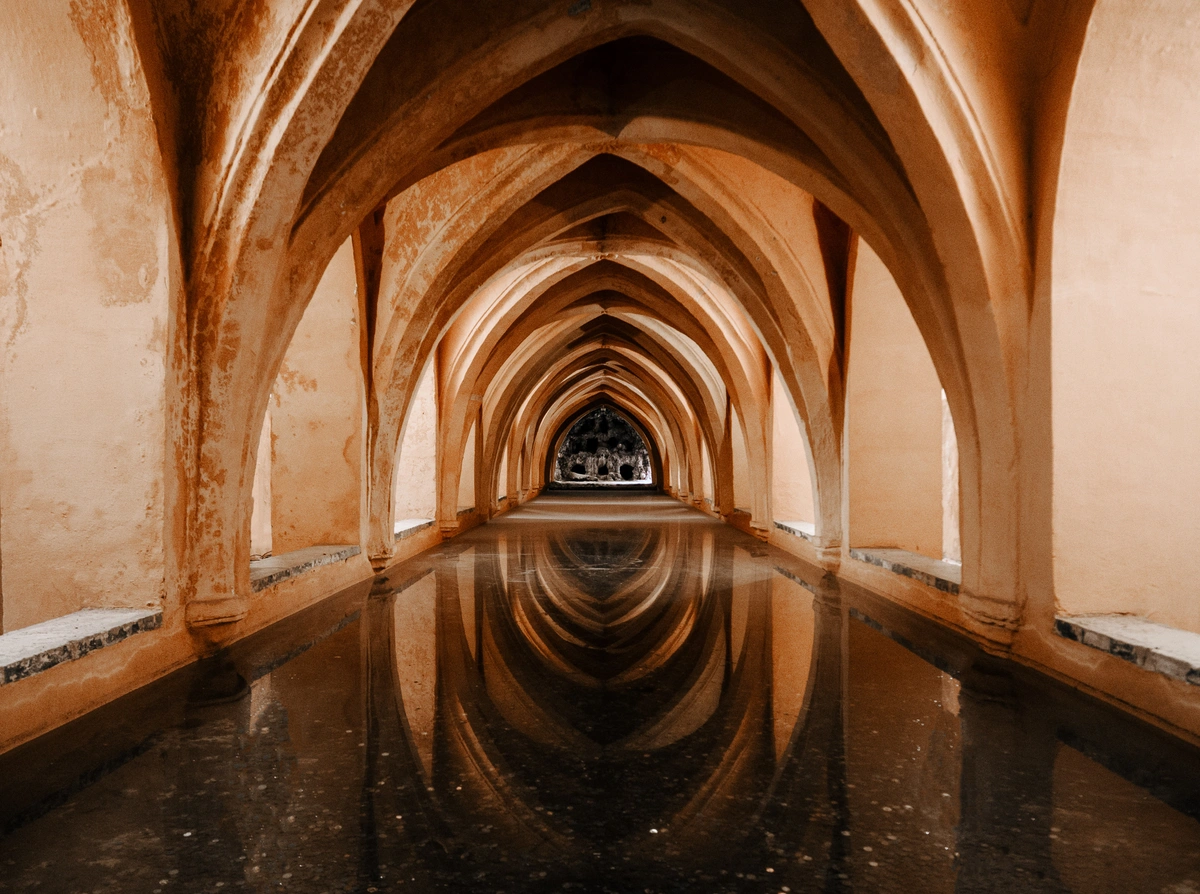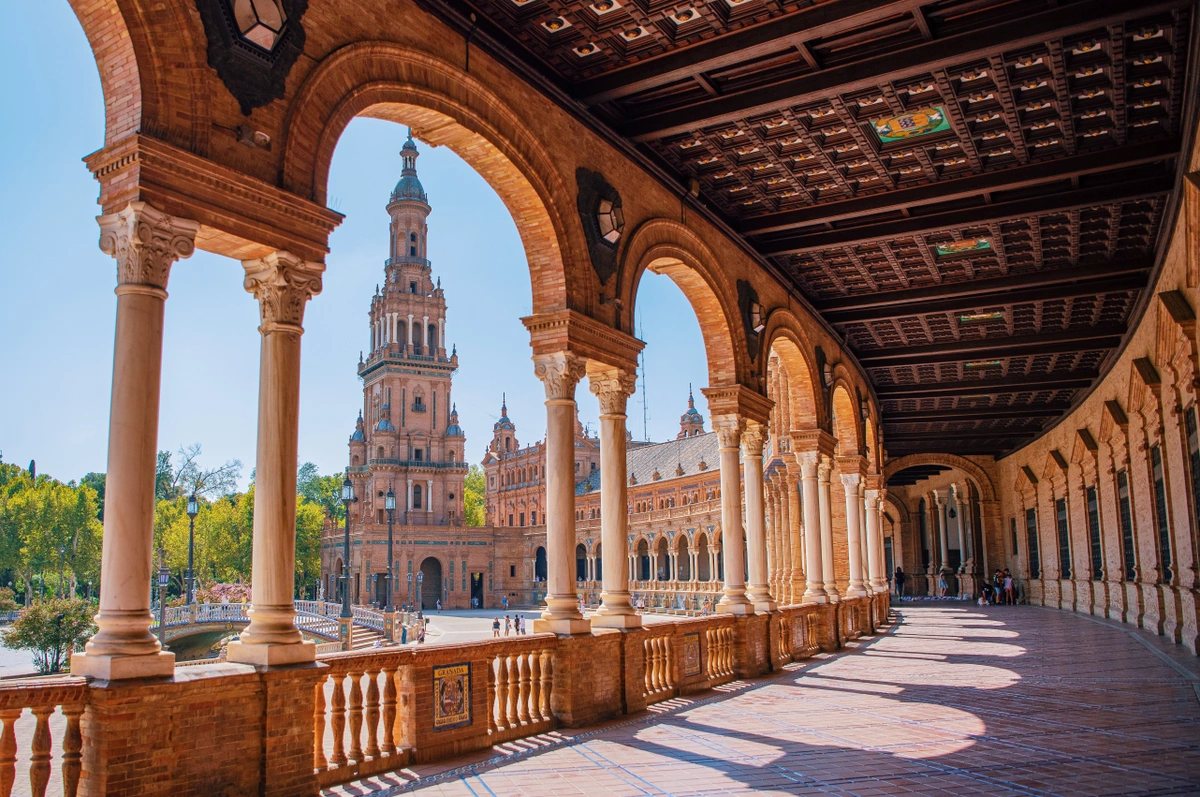Have a question?


Updated September 19, 2023
Deep in southern Spain, Seville is a sight to behold. Its streets fill with golden sunshine and the sounds of flamenco overflow from its squares. It is a traveler's dream. So if you’re ready to start acting on that dream, begin here with these 16 must-dos in Seville.
Seville is overflowing with historic riches. Decadent squares and opulent buildings are in no short supply–but many of them are also overflowing with visitors. If you’d like to uncover opulence with a few less people around, Casa de Pilatos is remarkably less visited.
It’s a palace which was built in the 1500s and part of which is still used as the residence of the current Duchess of Medinaceli. But other parts of the palace have been converted into a museum open to the public. There is also a luscious garden, which you should take your time enjoying. Plus make sure to notice all of the beautiful Spanish tile work as you wander around.

Seville is the capital of the southern Spanish region of Andalucia, where it is widely agreed that flamenco originated. That means of course that you can’t miss the opportunity for a flamenco show in its very homeland, because regardless of where you go, catching a flamenco show is one of the must-dos on any trip to Spain.
A flamenco show involves singing, dancing, and guitar. Nowadays you’ll very likely be served drinks and a meal as a part of the experience. There are a plethora of phenomenal choices of flamenco venues in Seville. A good flamenco venue is often on the smaller side, so make sure to decide where you’re going and book a table in advance!
Not only is the Santa Cruz neighborhood beautiful, but it is home to immense history and was once the Jewish quarter of Seville. Touristy though it may be, you could still spend days upon days strolling the alleyways, basking in the sun, and sipping the music of the streets of Seville.
If you’re hungry, check out Bodega Santa Cruz for tapas or Casa del Tesorero for something more substantial. If you’re after just a glass of wine stop by Le XIX.

Once part of the city’s defensive wall–and covered in gold tiling (thus the name Torre del Oro, or Tower of Gold), this tower has since been converted into the Museo Naval de Sevilla–Naval Museum of Seville. Entry is quite affordable and inside you’ll find replicas of ships such as the Santa Maria, historic naval maps, and more. You can also make your way to the top of the tower for an opportunity to see views across the city. Locals do say the views are worth it, but it is 90 steps to get you up the 36 meters (118 feet) to the top.

A visit to the Real Alcazar of Seville is among the best things to do in Spain, and it is an absolute must-do while in Seville. The majority of what you see today is as the palace was built in the 1300s for the Spanish king Pedro I.
The buildings of the palace and the extensive gardens are stunning to wander, but do note that there’s not a huge amount of information posted, so if you want to learn more about the history of the space you should either take a good guidebook or book a guided tour. Either way, definitely buy tickets in advance as this is perhaps the most popular attraction in Seville so you don’t want to get caught in a long line in the hot sun.

Though this plaza may seem to date back centuries, it was actually only built in the early 1900s for the Ibero-American World’s Fair. But it was purposefully built to reflect and match the architecture and history of the city. A visit is a must for Seville, but it is also one of the best things to do across all of Spain.
Most of the buildings in the semi-circle-shaped plaza are used by the government. There is a museum on the military history of Seville right on the square which is free to enter. And if you fancy something a bit more romantic you can hire a small boat to paddle you around the canal that circles the plaza.
Just in front of Plaza de Espana is the 100-acre Parque de María Luisa. Inside the park, you’ll find squares, statues, Roman sculptures, fountains, and ponds, as well as both the Archeological Museum and the Museum for Ethnology. The park is a great, quiet place to escape the heat of the city streets, whether that be for a stroll, a picnic, or an afternoon of feeding the ducks.
A visit to the Seville Cathedral (officially Santa Maria de la Sede) and its towers (La Giralda) is another must-do in the city. The cathedral was built on the site of an existing Moorish mosque, and it still retains elements from that time, resulting in an exciting mix of architectural styles. Amazingly, it is the fourth-largest church in the world, and the largest ever built in the gothic style.
Again, queues can get long, so book your tickets in advance to reserve a spot (plus they are one euro cheaper online). You also have the option to book a guided tour through the cathedral and onto the roofs.
If you’re interested in the colonial history of Spain in the Americas, then Archivo General de Indias is a must-stop on your Seville trip. The collection here includes photos, drawings, diaries, and other documents. They total approximately 43,000 archival pieces in all, kept on seven kilometers (about four and a half miles) of shelving, and span the history from the 15th through the 19th century. All of these items are kept in a building that was once a merchants’ exchange–so impressive in its own right. While much of the documentation is kept in the archives (and can be explored digitally) there are always some documents on public display. Entry is free and there are two guided visits daily.
Rumored to be the oldest tapas bar in Spain–as well as the spot where the whole concept of tapas was born, El Rinconcillo first opened its doors in 1670 and is undoubtedly the oldest bar in Seville. When you walk in you may feel like it’s just about as it was back in the 17th century.
While you can book a table upstairs, the atmosphere is better standing at the bar downstairs and ordering as many tapas as you can fit. Try the pavía de bacalao or a plate of the jamon. While El Rinconcillo is a fun stop, if you’re looking for a less famous, more laidback tapas stop, or if you want to do one of the most classic things in Spain–and go on a tapas crawl.
Seville has nearly 200 kilometers (just over 100 miles) of bike paths \ so if you’re active and want to see a lot of the city quickly, a bike tour is a great option. There are several companies that offer organized bike tours–some on electric bikes. If you book one of these you can expect to stop by just about all of Seville’s highlights, but all your stops will be short. And you should expect to be cycling with about 10-15 others.
Once a castle, then a headquarters for the infamous inquisition, this site is now a museum documenting the history of the Christian Reconquest of Spain. You can visit the cells which held the religious prisoners, and explore other areas of the ruined castle-turned-prison–all while listening to a very informative (and free) audio guide. Entrance to the museum is always free.
It would be impossible to miss the Space Metropol Parasol, also known as the Mushroom of Seville, which opened in 2011 right in the center of the city (also a great area to stay in Seville if you’re trying to figure that out!). The mushroom-like shape was actually inspired by both the Seville cathedral and the ficus trees in the area. While it’s cool to look at from the outside, you can actually also enter it. Locals say the highlight is going to the top for the 360° views of the city. The best time to head up there is around sunset, for lovely golden hour light across Seville. The roof is reached by elevator, so it is handicap accessible.
Other than the rooftop, you can also visit the Museo Antiquarium in the basement which incorporates the ruins uncovered during construction.
While there is a Museum of Bullfighting at the Seville Bullring, it is also an active bullfighting venue, and the oldest one in Spain. When there are no bullfights on you can visit the arena along with the museum. A visit includes a guided tour, offered in both English and Spanish, throughout the day. You will learn all about the history of the arena, the bulls, and the fighters.
If you do choose to attend a bullfight, know that there are two sections–the more expensive one is shaded, and due to the strong Sevillian sun–is worth the extra cost.
This small museum is in a 17th-century building that has been transformed from what was once a home for aged priests. It now shows off remarkable works by Velasquez, Zurbaran, and Murillo, to name a few. You can see these masterpieces along with an ornately decorated chapel. There is an entrance fee to the museum, which includes an audioguide. Though this is yet another great spot to visit in Seville, it is often a bit quieter than the more popular tourist attractions.
The extensive gardens of Murillo, full of greenery, palm trees, gorgeous, shaded benches, and many colorful flowers are another great chance to escape the heat and noise of the city for a quiet breath of fresh air. Beyond the lush greenery, you can also find a memorial to Christopher Columbus and his ship the Santa Maria designed by J. Talavera.
These 16 awesome spots are just the tip of the iceberg for what there is to do in Seville.
How should we contact you?
Call
Thank you! We'll get back to you as soon as possible!
Click to register and track your question!
If you would like to follow up with us:
+1 (855) 782-3006